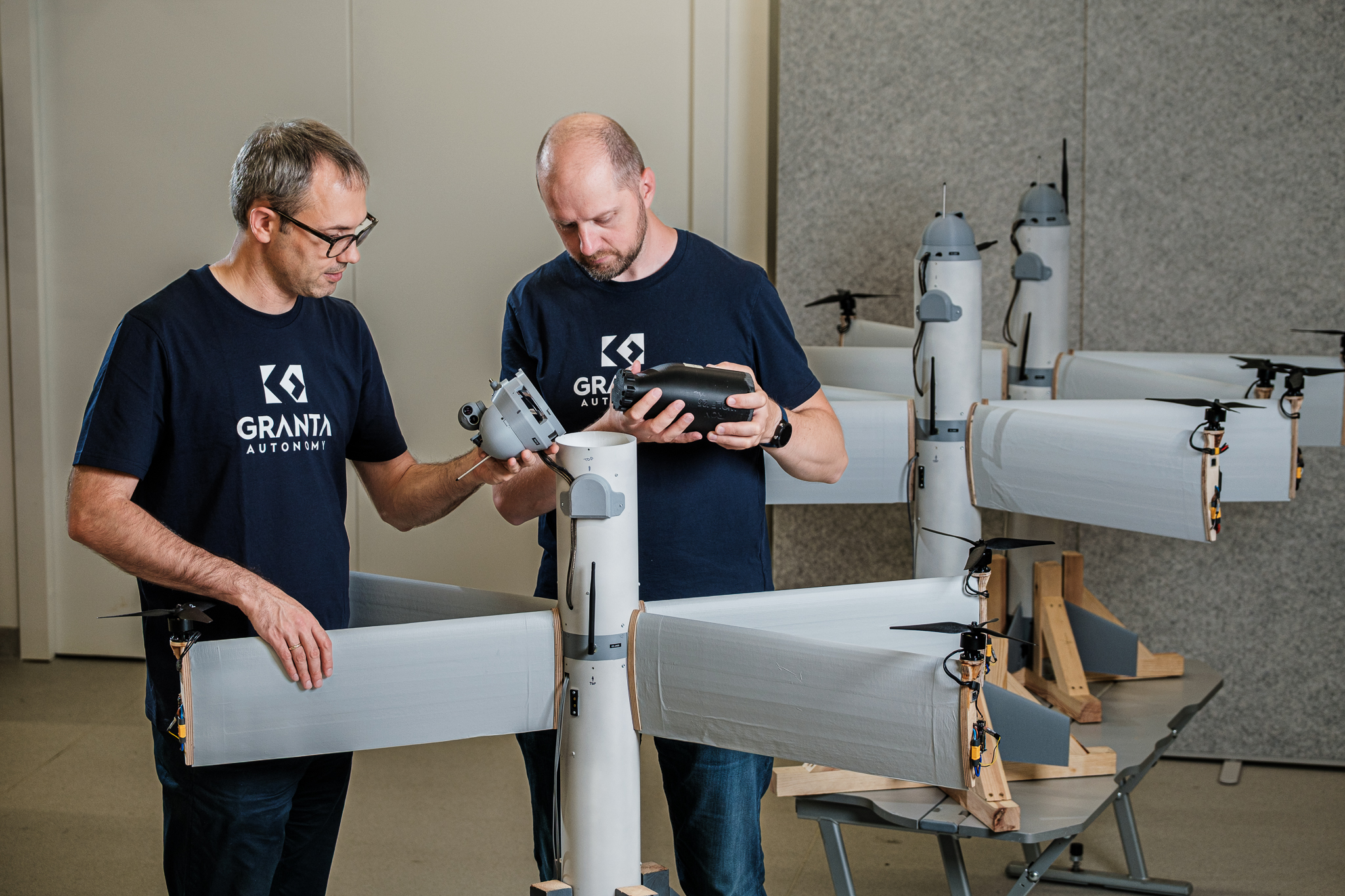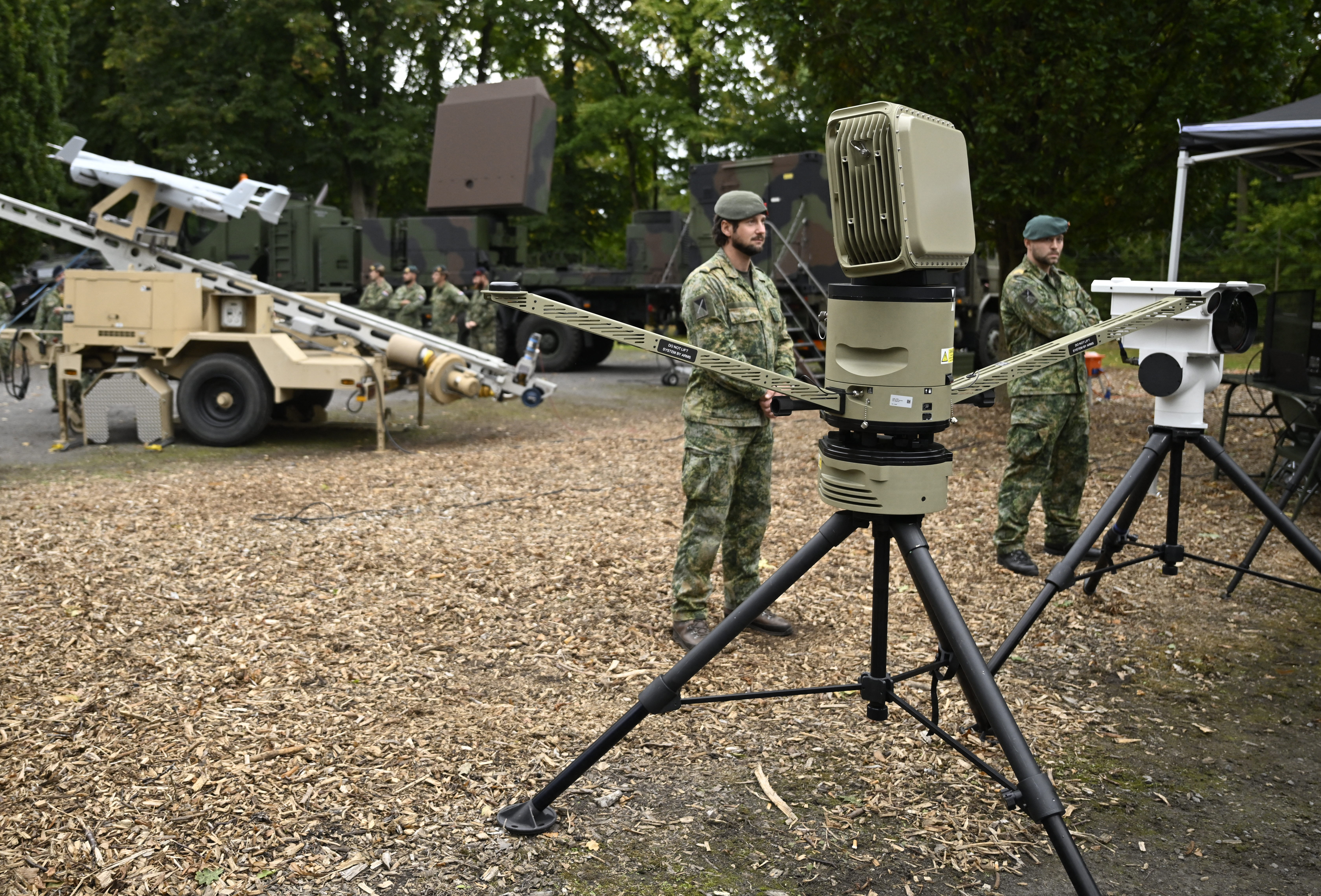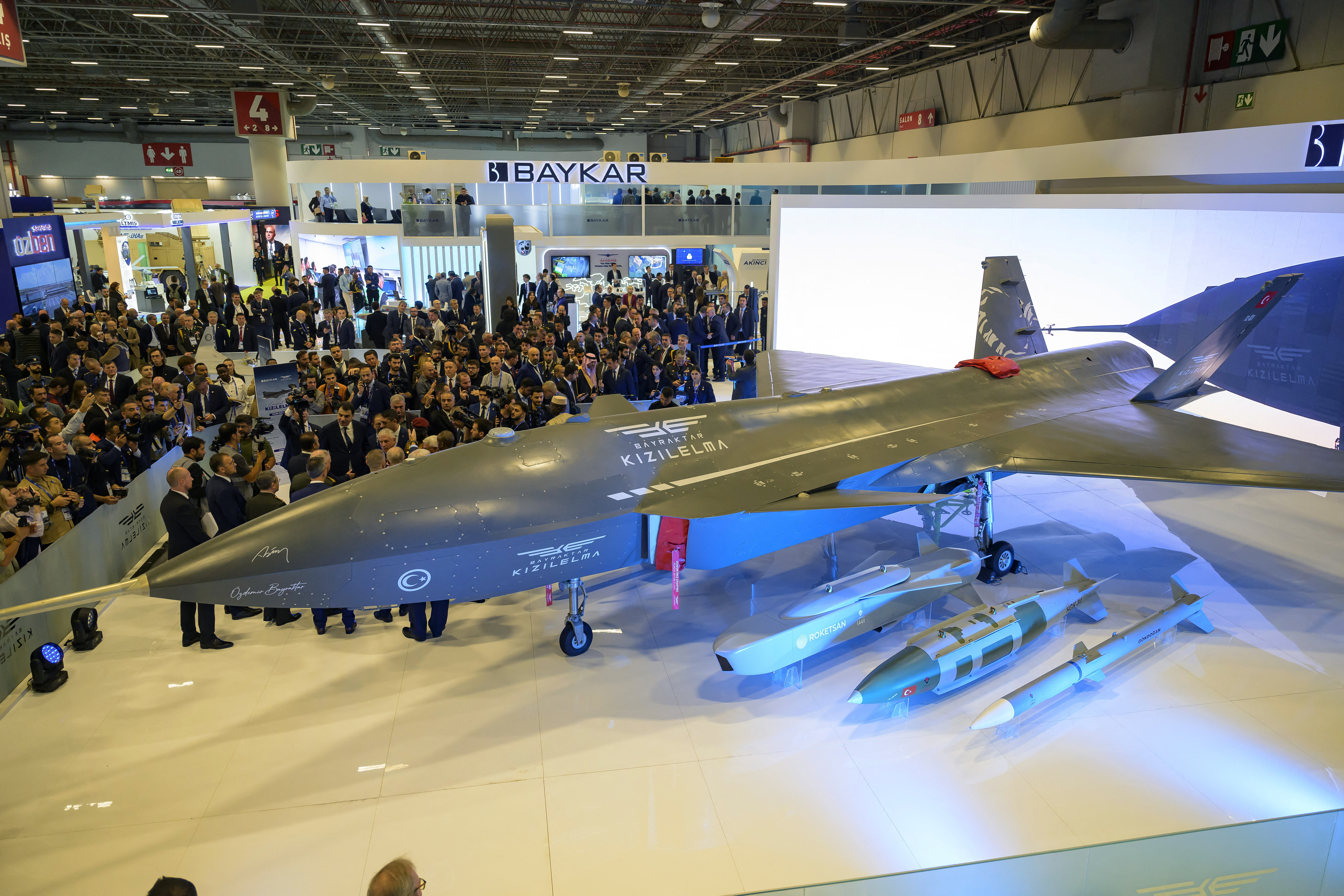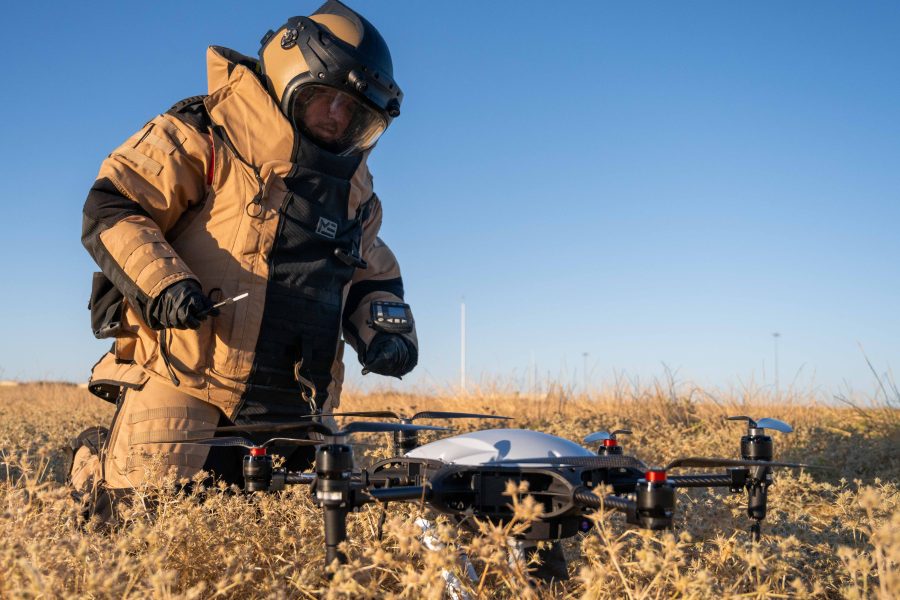
Lawmakers on both sides of Capitol Hill are pressing the Pentagon to get serious about the threat cheap, small drones pose to U.S. forces at home and abroad—and to put them in the hands of American troops as quickly as possible.
Twin drafts of the 2026 defense policy bill making their way through the House and Senate include some of Congress’s strongest language yet in favor of deploying offensive small unmanned aerial systems to spy on or attack America’s foes and protecting U.S. assets from those same aircraft.
The Defense Department must make “substantial changes” to its policies and priorities to meet “intense global demand” for counter-drone systems, particularly in the Middle East and the Pacific, House lawmakers wrote in the draft 2026 National Defense Authorization Act.
“The Department has consistently returned to request from Congress additional counter-UAS authorities, despite not fully using available counter-UAS authorities,” the House Armed Services Committee said.
The congressional push to protect against a technology once seen as the purview of hobbyists comes as the Pentagon pledges to bolster U.S. drone manufacturing and rush them to the field.
“We will speed up the timeline of rapid innovation,” Defense Secretary Pete Hegseth said July 16. “We have to, on behalf of our warfighters, on behalf of the threats that we face around the globe, on behalf of the changing face of warfare.”
High-level interest in Washington could help the U.S. regain lost ground in an area of asymmetric warfare that has gained popularity and effectiveness while the Pentagon has poured money into high-end, stealthy equipment.
Ukraine’s June 1 surprise attack on Russian military aircraft using more than 100 small drones gave U.S. leaders a stark example of the havoc explosives-laden quadcopters can wreak at a fraction of the cost of traditional military vehicles and weapons. Operation Spiderweb damaged more than three dozen aircraft at bases deep inside Russia, including around 10 that were destroyed, according to official and independent assessments.
The operation, which followed the January 2024 drone attack that killed three U.S. troops at a secluded base in Jordan, has injected new urgency into counter-UAS efforts after years of piecemeal attempts to shield American military installations from small drones with defenses ranging from nets to lasers. Those initiatives are hindered by gaps in policy, law, and technology that have left the federal government struggling to identify, track, or destroy unfamiliar drones.
“The [Federal Aviation Administration] tends to frown on us shooting things down out of the sky,” Jeff Waksman, the Army’s acting installations chief, told senators June 25.
Now House legislation would order the Air Force to launch a pilot program with the FAA to plug into civil airspace monitoring tools to detect and identify troublesome drones loitering by domestic military installations. At least two bases would be involved in the pilot, according to the chamber’s defense policy bill.
Another initiative would require the military to buy anti-drone defenses to protect four facilities or assets and deploy them within a year after the bill becomes law. The Army’s Coyote counter-UAS system, designed by Raytheon, could also be useful for protecting Navy vessels, the House committee added.
The pilot programs could help resolve the shortcomings that allowed for one of the most high-profile incursions in recent years, when drones of various sizes surveyed Joint Base Langley-Eustis, Virginia, over the course of 17 nights in December 2023. Langley is home to Air Combat Command headquarters as well as a fleet of F-22 Raptors, one of America’s most advanced fighter jets.
While then-Pentagon spokesperson Sabrina Singh said last October the drones—including some the size of a small car—didn’t appear malicious, the military was trying to determine who controlled them nearly a year after the incident. Sen. Tim Kaine (D-Va.) said June 26 the Defense Department still hadn’t offered lawmakers satisfactory answers about the airspace violation.
The House bill would also codify the Pentagon’s Joint Counter-Unmanned Aircraft Systems Office as the joint organization responsible for coordinating the military’s efforts to defeat small drones. The office is tasked with developing a counter-UAS strategy and working with U.S. Northern Command to roll out new equipment and tactics in the field.
Other language calls for more details on small drones designed to collect intelligence that lack a clear path for regular use in the field, and for the Army to consider adding counter-UAS training into boot camp. One amendment pushed for new armor to better protect troops from shrapnel flung by drone attacks.
Air Force Chief of Staff Gen. David Allvin suggested earlier this summer that troops must also train differently to defend bases from drones after decades without fear of airborne threats. Airmen are combining various counter-UAS tools and rethinking how to fend off attacks at home and abroad, he said.
“Having a unit trained ahead of time to know how to defend the base and … the force generation that it provides is absolutely key,” he told members of the House Armed Services Committee June 5. “I think we’re making some progress on that.”
The Republican-led tax-and-spending package enacted earlier this month also provides $1.3 billion to bring on new counter-UAS equipment. The “One Big, Beautiful Bill” includes $50 million to accelerate the development of autonomous, one-way attack drones, as well as $1 billion to grow the industrial base for those systems.
Senators are likewise pushing the military’s acquisition and research officials to come up with a plan to revive American industry’s ability to build small drones.
Though groups like the Defense Innovation Unit’s Replicator program and Air Force’s Task Force 99 in the Middle East have made headway on repurposing commercial drones for combat use, and ground units carry military-grade UAS to scout out unfamiliar areas, the U.S. military hasn’t widely embraced the offensive possibilities that small drones offer. That could soon change.
Defense officials earlier this week touted plans to arm U.S. troops with low-cost drones through a flurry of new domestic UAS manufacturing.
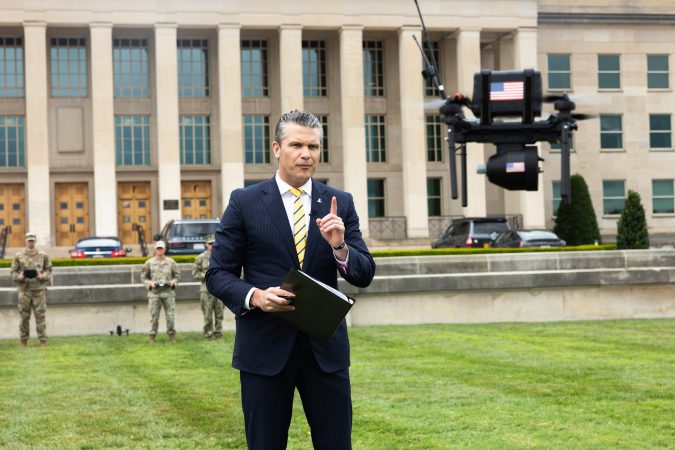
Perusing 18 drone prototypes arrayed in the Pentagon courtyard July 16, Hegseth pledged to cut through red tape that has slowed drone production and called for more designs that rely on commercial components rather than bespoke parts that take longer to create.
Emil Michael, undersecretary of defense for research and engineering, said recent directives from the White House and Pentagon look to broaden the scope of drones the military will accept. Hegseth’s July 10 memo also allows base-level commanders to decide whether troops can use a certain drone rather than pushing that request up to the Pentagon’s top echelons.
The goal is to make drone warfare cheaper, more resilient, more powerful, and farther-reaching.
In the memo, Hegseth said he expects small drones will be “integrated into all relevant combat training” ahead of field experiments to prove their worth in real-life conflicts.
Pentagon Editor Chris Gordon contributed to this story.
The post Lawmakers Push Pentagon to Speed Small Drone Use—and Counter Threats appeared first on Air & Space Forces Magazine.

Air, Congress, 2026 NDAA, drones, Industrial Base, National Defense Authorization Act, Pete Hegseth
Air & Space Forces Magazine
[crypto-donation-box type=”tabular” show-coin=”all”]







